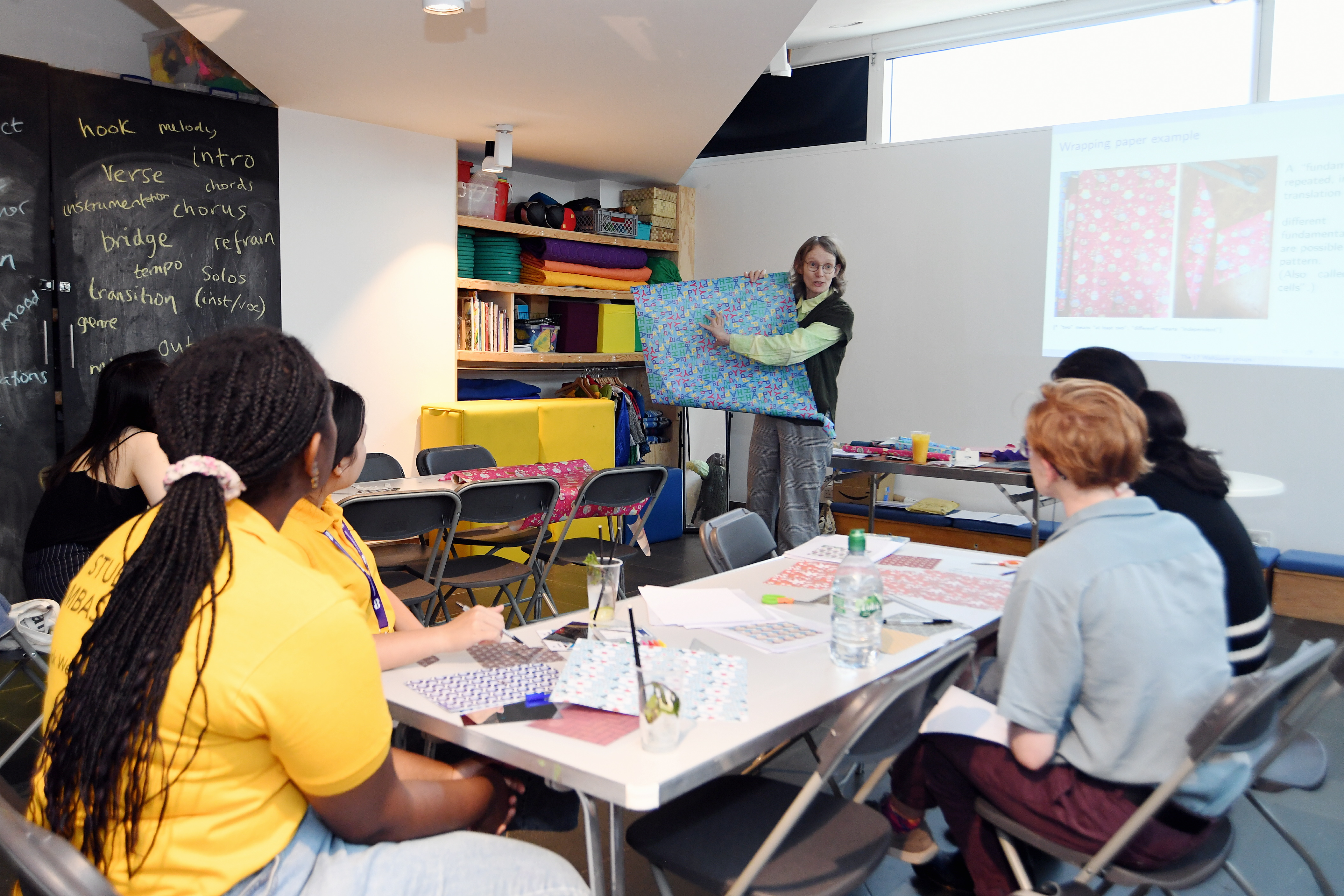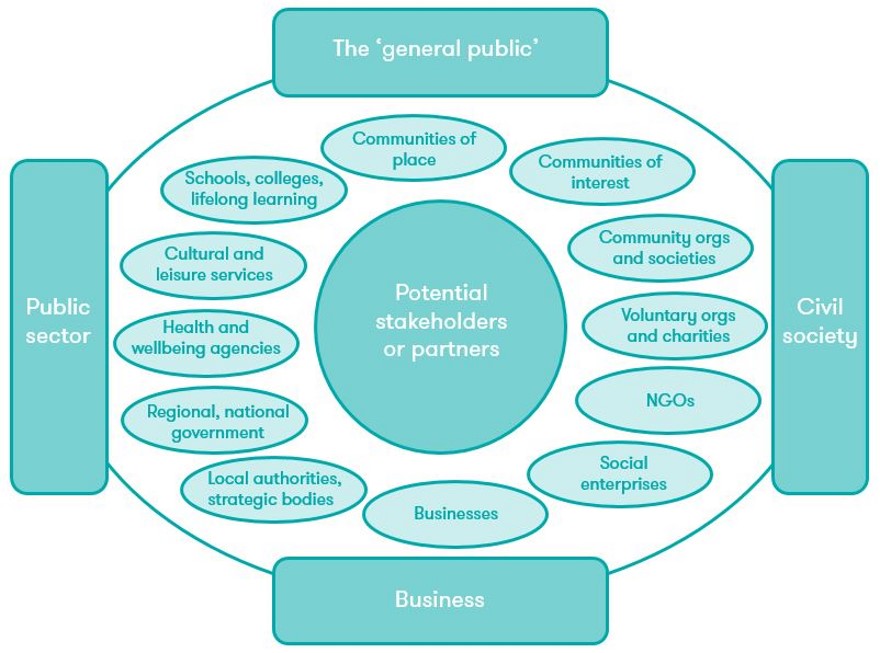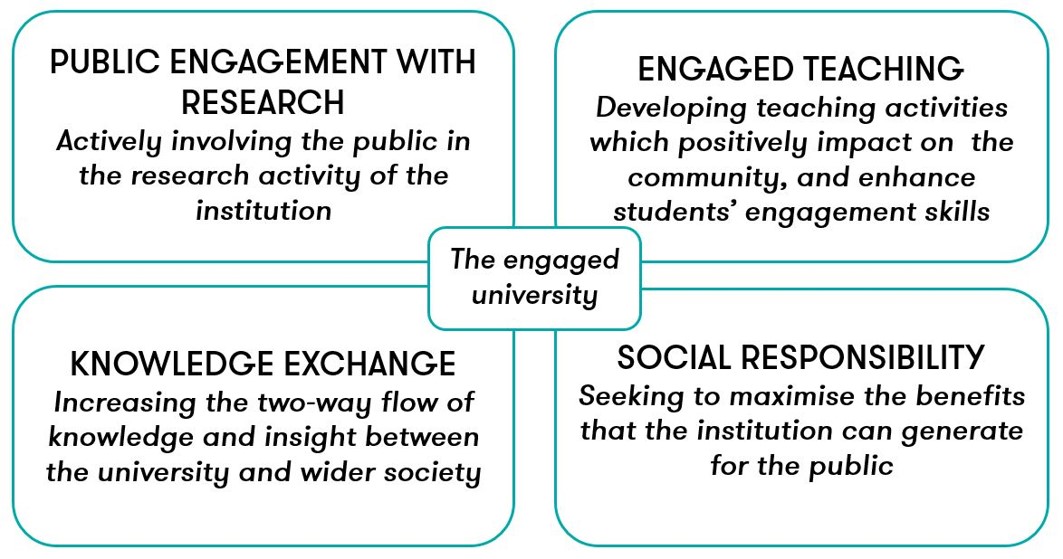What is engagement?
What is engagement?
Engagement (also referred to as public engagement) is about people inside universities interacting with those outside universities to share knowledge and research, collaborate on ideas, co-produce new approaches and enable curiosity, exploration and conversation. Through it everyone gains valuable interactions and insights, in turn contributing to societal development and progress.

It's sometimes referred to as Public Engagement, Impact, Outreach, Widening Participation or several other terms. You can read more about the different terms and what they mean on our Terms for Engagement Padlet.
Examples of Engagement
There are lots of different types of engagement - for example:
- Collaborating on a piece of research/ solutions with community partners
- Public talks
- Advising policy makers
- Working with artists on exhibitions/ installations
- Visiting schools
- Consulting patient groups on a clinical trial
- Live events, social media, website, television, books
Explore more detailed examples on our Examples of Engagement Padlet. You can also look at the Case Studies section of the Skills Festival for in depth examples.
Who are the "Public"?
Warwick Institute of Engagement supports engagement with many different types of people. We always try to avoid thinking of just the "general public" and aim to be specific about who we want to engage with. Our Audience Development Toolkit is a good place to start if you want help mapping out your own potential public audience. The National Coordinating Centre for Public Engagement (NCCPE) also produce this useful diagram which gives a good overview of the different types of people we might be thinking of when we say the "public"

The Engaged University
The NCCPE has a guide on what an Engaged University looks like. This diagram helps to summarise the different types of engagement that Warwick Institute of Engagement supports.

Why does engagement matter?
Why engagement matters to you will be individual to you and something you should reflect upon. However WIE believe there are many benefits to staff for getting involved with engagement, including:
- Personal enrichment (many people enjoy their engagement work and find it very rewarding)
- Stronger research and teaching more connected to society
- Opportunity to develop new skills and set yourself new challenges
- Chance to share what you're passionate about with more people
- Influence more people and voices to be passionate about the subject your care about
Part of the role of WIE is to make sure staff are being recognised for this work. That's why our Promotion and Reward Learning Circle have done a review of the Academic Promotions Criteria to ensure Impact, Outreach and Engagement work is valued equally to other areas of academic work and there are clear examples of the evidence you can use for your case. See the "Engagement and your career" pages for more information on this. We have also championed Impact, Outreach and Engagement being given time for as part of the latest review of Academic Workload Models in every department. For non academic staff we'd encourage you to talk about this work as part of your annual PDR conversation, and make sure your line manager is aware of the impact it has for your role and how this is contributing to Warwick's Strategy.
We also run the Warwick Award for Public and Community Engagement, celebrating both academic and non academic staff, as well as students, for their engagement work.
For more on this - see the NCCPE Case for Engagement
Read: Public Engagement - when science meets society: What it is, why it matters, and why it's sometimes problematic

This blog was written by Vincent Gerwent as part of his assessed work for our UG Public Engagement module.

